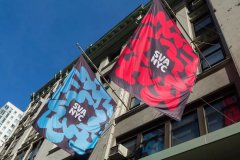摘要:admissions counselor at the Tyler School of Art of Temple University in Philadelphia. “I see so much anime and Pokémon and Grand Theft Auto,” she says. “I see one drawing done 20 times.”
Guidance Counselor | Art Portfolio Prep
By DANIEL GRANT
THUMBING through one portfolio after another can be a frustrating day’s work for Melissa Morgan, admissions counselor at the Tyler School of Art of Temple University in Philadelphia. “I see so much anime and Pokémon and Grand Theft Auto,” she says. “I see one drawing done 20 times.”
To greater or lesser degrees, grades, class rank and SAT/ACT scores count, but admissions judgments for visual arts programs are largely based on a student’s portfolio of work. That’s true whether the interest is fine arts, fashion, interior or graphic design, architecture or illustration. Yet few students have any idea what they should be submitting when applying. For that matter, neither do guidance counselors and even high school art teachers; many high schools don’t even have art classes.
But where there is a void in education, someone comes along to fill it. Helping applicants get the portfolio right is becoming a business. Portfolio prep classes — an SAT course for budding Picassos — teach tricks of the trade that impress admissions officers. At National Portfolio Day, colleges advise students on how close they are to the right mix and what else is needed.
So what should be in your portfolio?
LESS ANIME, MORE RANGE.
An acceptable portfolio generally contains 15 to 20 drawings, paintings, collages, small three-dimensional works or photographs of these (digital images on CDs are increasingly being submitted, too). “What I need to see are observational drawings from life,” Ms. Morgan says. She wants “a range of drawings and other media that show me the depth and range of a student’s talents.”
By observational drawings, Ms. Morgan means drawings from life — of a human figure, landscape or still life — rather than from a photograph or someone else’s painted scene, and the largest number of samples should be these.
William Swan, head of admissions at Pratt Institute in Brooklyn, says students whose portfolios reflect versatility, exhibiting interest in different realms of life drawing, are likely to have an advantage over those who display narrower concerns. “These kinds of drawings identify a student’s ability to compose a scene, to represent volume, to portray objects accurately and creatively, showing original thought,” he says.
For most fine art and design students, the first year consists of a foundation program that introduces a variety of mediums. The ideal portfolio demonstrates experimentation in at least some of them, like oil, watercolor and pastels. “Schools want to see that students have at least tried other media and are encouraged when they show not necessarily mastery but accomplishment,” Mr. Swan says.
ONE PORTFOLIO FITS ALL FIELDS.
Most students enter a Bachelor of Fine Arts program with limited exposure to fields like architecture, graphic design and interior design. And they don’t make career choices until sophomore year.
“You are applying for a specific degree, the B.F.A., not a specific major,” says Greyson Hong, an assistant director of admissions for the School of the Art Institute of Chicago. “For graphic design, architecture, fine art, it’s all the same portfolio.”
Natalie Lanese, Mr. Swan’s assistant at Pratt, says students who have taken fashion or graphic design classes may submit past assignments to demonstrate their experience, but there is no requirement to do so. “First and foremost,” she says, “we want to see how well they can draw.”
To the extent that a portfolio might differ from one institution to another, it’s more a matter of adapting it to a teaching philosophy than to a field of interest.
At the Pennsylvania Academy of the Fine Arts and the Paier College of Art in Connecticut, drawings that reveal good technical skills are favored over abstraction or art installations. The School of the Art Institute of Chicago, on the other hand, puts greater emphasis on concepts and theory. “Observational drawings are not as sought-after here,” Mr. Hong says. “We prefer to see art that combines technical ability with ideas.”
A few places do want specialized portfolios. The San Francisco Art Institute asks design and technology majors to provide digital work along with observational drawings and samples in other mediums. Students at the Fashion Institute of Technology in New York must declare their majors when they apply, and portfolio requirements vary by area of study. For fashion design, for example, portfolios must include 6 to 10 fashion sketches (plus an at-home project given to all applicants). If you’ve made a garment that demonstrates your design sense and your way with a needle, a photo will be a “significant asset to your portfolio.”
Events like National Portfolio Day help applicants get a better idea of what schools look for.









